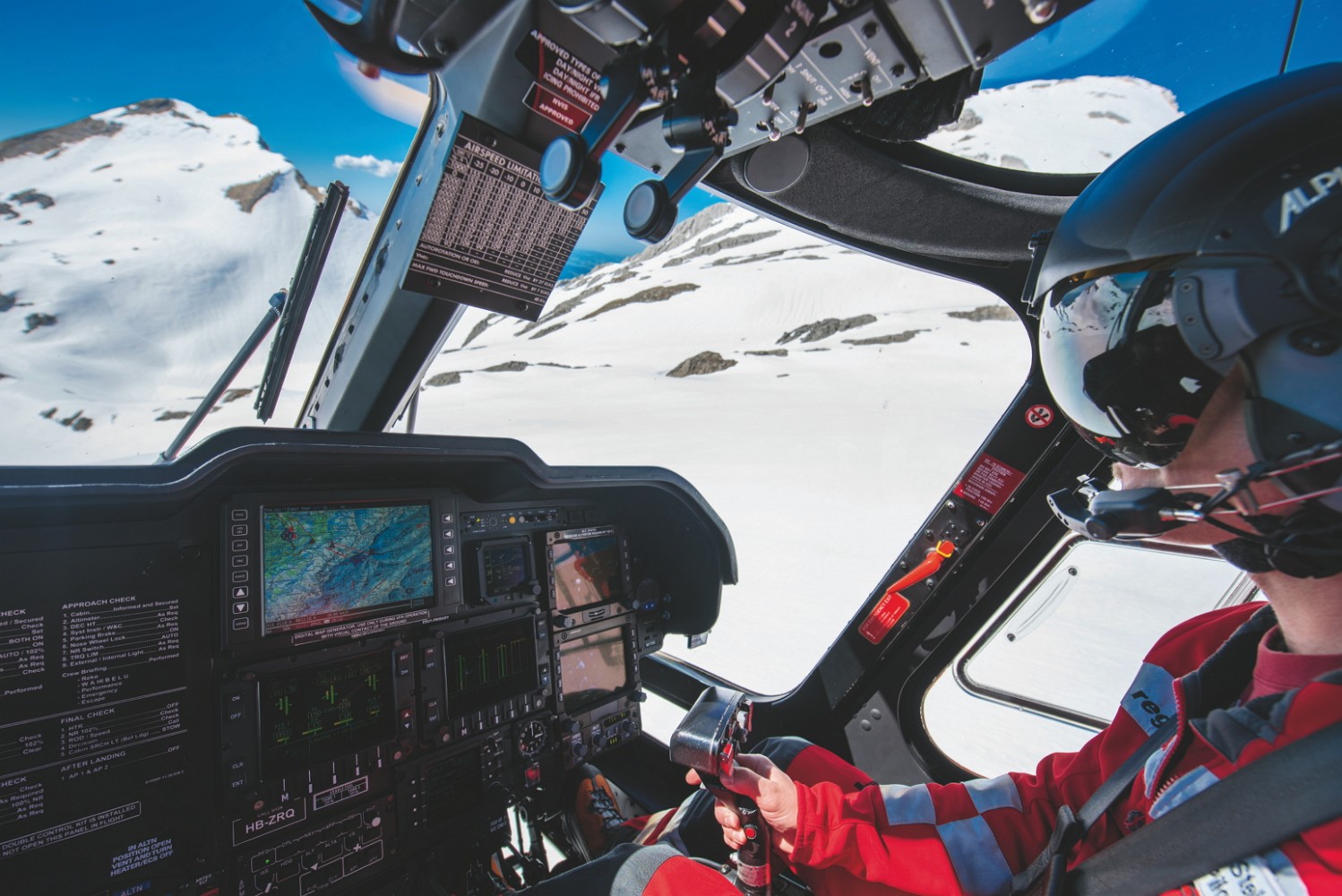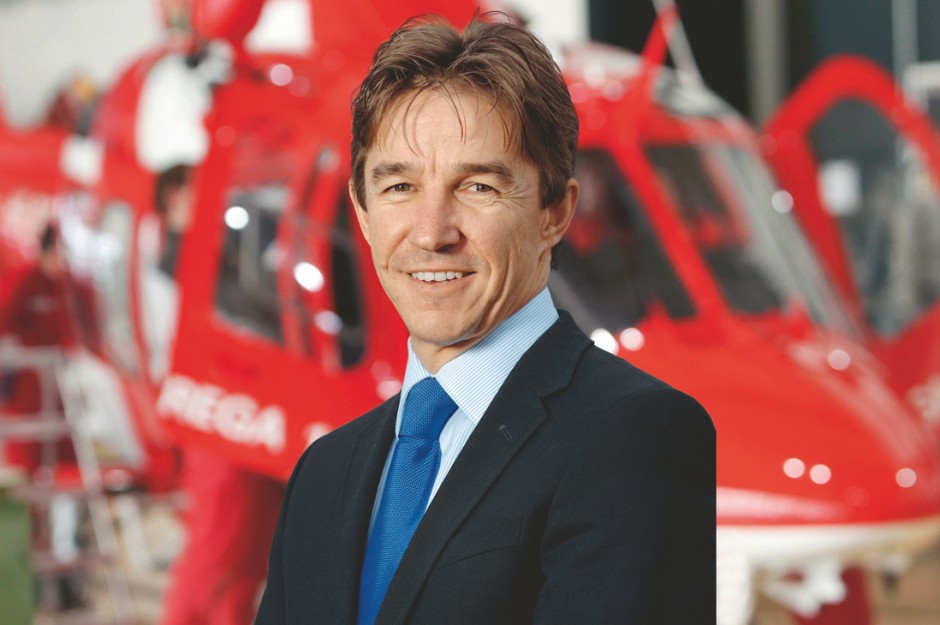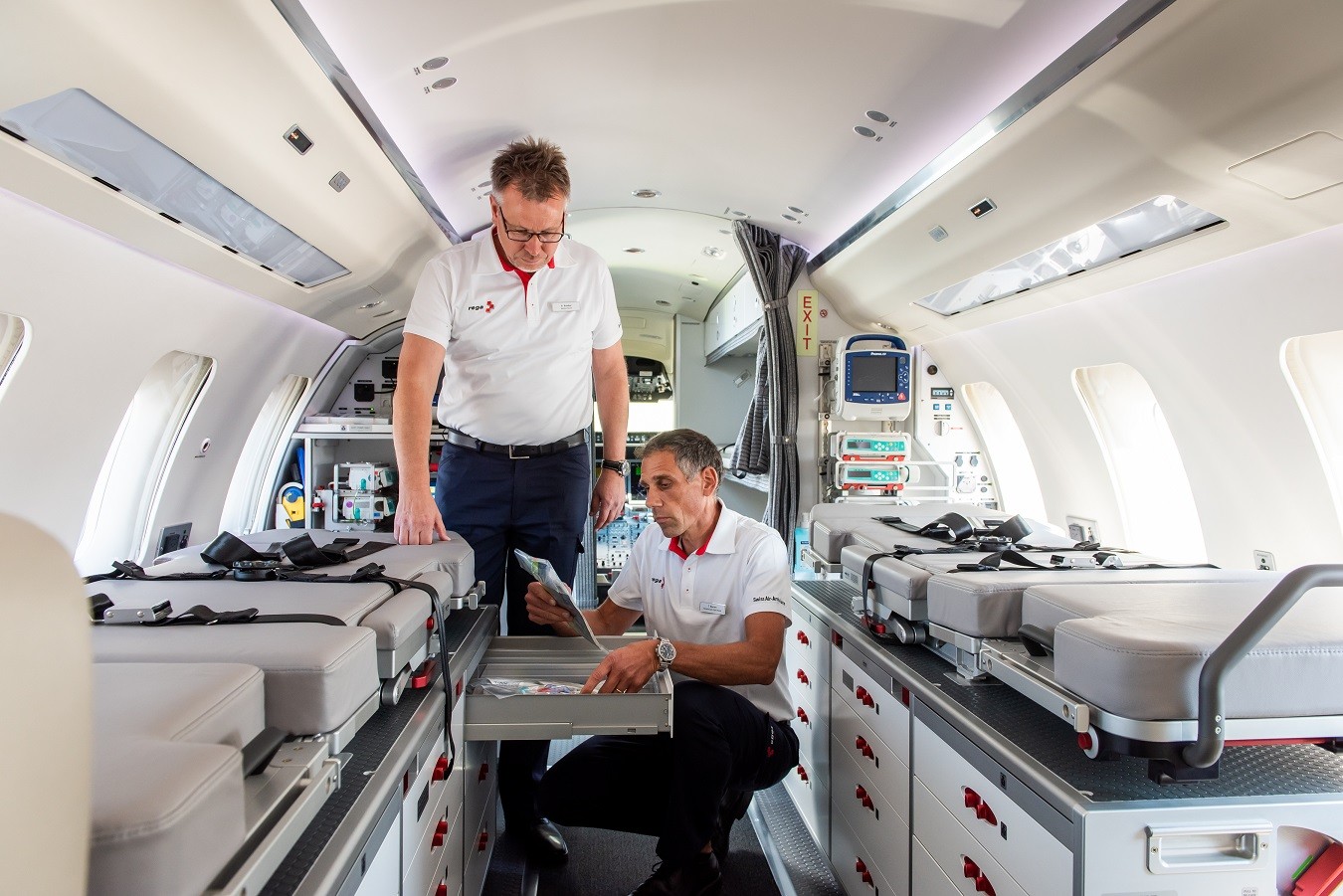The main factors the team considered included maintenance, reliability and size. Reliability is decisive because Rega operates its jets around the world, 365 days a year, and needs to react quickly whenever it is alerted via phone or mobile app. The Challenger 650 will have several advantages over its previous model, including higher-thrust engines that ensure a shorter takeoff distance and the capacity to fly farther.
Size is important because the jets have to be equipped in order to transport up to four patients at a time – two in intensive care units, lying down – as well as medical staff. The Challenger’s expansive cabin allows standing room for staff seeing to patients throughout the journey. Kohler recalls that when the tsunami hit Southeast Asia in 2004, Rega managed to safely fly 14 patients back to Switzerland.
Complete Control
While the Challenger 650’s sleek cabin design and in-flight entertainment are often deciding factors for owners, when Rega’s new fleet is delivered the aircraft will be virtually empty. Swiss aircraft completion company
Aerolite will be in charge of outfitting the cabin, while Canada’s
Flying Colours will take care of integrating medical equipment, which includes monitoring devices, suction pumps, respirators and oxygen cylinders, as well as a three-piece ramp that accommodates a stretcher trolley. A made-to-scale plywood mock-up of the cabin was built in order to plan and test the space in real life, allowing necessary adjustments to be made ahead of time, including incorporating wider beds. Other important modifications for Rega air ambulances include reducing noise in the cabin with a special assembly method that lessens engine-induced vibrations – vital for delicate patients like Daris.
Stories like his, successes born of shaky starts, are a testament to both Rega’s efficient fleet and capable medical staff – as is the organization’s nationwide popularity. Over the years, Rega has become a household name in Switzerland, where it has 3.2 million patrons (who, in exchange for donating, can have the costs for any Rega services they need waived, wholly or in part). Says Kohler, “The biggest honor and at the same time the biggest challenge is that Rega enjoys a huge acceptance in Switzerland. One out of three Swiss is a Rega patron. That fills me with great pride. At the same time, each patron has high expectations that Rega must fulfill.”
This story was originally printed in issue 27 of Experience magazine published October 31st, 2016.








